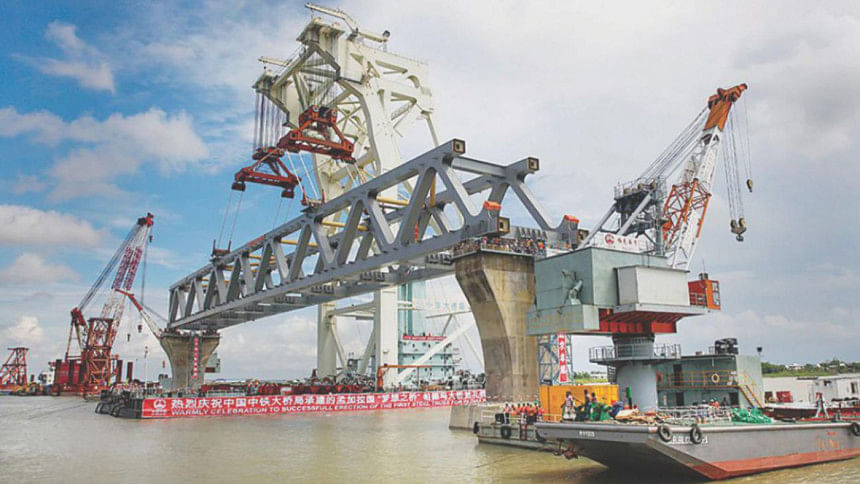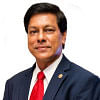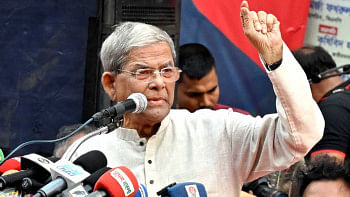From 'basket case' to 'development model'

In 1971, when Bangladesh emerged from the War of Liberation, many doubted that the country could survive as an independent state but today, 47 years later, those doubts have been put to rest. Despite being dogged by a number of thorny issues such as overpopulation, political turmoil, corruption, natural calamities and poverty, there has been some significant progress in almost all spheres of life. We have made considerable progress in poverty reduction, health, family planning, female education, women's empowerment, and child mortality reduction, and are performing well in many other socio-economic sectors. The country has come a long way since its early days and is now being tagged in some circles as a "Role Model for Development".
But the question is, how did Bangladesh move from being a "basket case" to a "development surprise"? People say, behind every success, there is a story. So, what's the story behind Bangladesh's developmental transformation?
Our economy is mainly driven by three major sectors: agriculture, export and remittance. More than half of our population is directly or indirectly involved with agriculture, and its contribution to the GDP growth is 14.10 percent. The sector has made commendable progress over the past 47 years. But its achievements remain an untold story despite having an overwhelming impact on major macro-economic objectives like employment generation, poverty alleviation, human resources development, food security, etc.
In 1971, there were 75 million people in the country. Its rice production was only 10 million metric tonnes. Presently, our population is more than 160 million and to accommodate this extra-large population, we have lost a significant amount of cultivable land. Meanwhile, rice production has tripled in the last 47 years to over 33 million metric tonnes, making Bangladesh the fourth-biggest rice producer in the world. The production of jute, pulses, wheat, tea, maize, sugarcane, potato, chili, onion and all other crops has also steadily improved.
Once agriculture, livestock, aquaculture and fisheries were thought to represent a backwater sector but today the situation is changing. Bangladeshi youth are looking at these sectors as an opportunity for them to be self-employed. More and more educated youth are now participating in this business. And as a result, Bangladesh is now the third biggest inland fish producer in the world. In the 2016-17 fiscal year, the country had produced 4.134 million metric tonnes of fish. In 2018, it earned Tk 4,500 crore by exporting around 69,000 metric tonnes of fish and fish products. The fisheries sector is currently contributing 3.8 percent of the GDP. Also, a noticeable development has taken place in commercial poultry production that has generated considerable employment through the production and marketing of poultry and poultry products.
After the independence of Bangladesh, there were many new developments in industrial spheres. A considerable progress was made by the garments, textiles, leather and leather goods, pharmaceuticals, ceramic, cement and many other sectors. The success story of the ready-made garment (RMG) industry is well known. The sector has emerged as a silent revolution. Today it is creating employment opportunities for 4 million people, of whom 80 percent are women. In the fiscal year 2017-18, the country made approximately USD 30.61 billion's worth of garments export, which established us as the second-largest garments and knitwear exporting country in the world. The tag "Made in Bangladesh" has also brought glory and honour for us.
Undoubtedly, RMG and agriculture have taken the economy to a new trajectory, but it would not be an overstatement to say that the backbone of the economy is remittance. Remittances earned from overseas Bangladeshi migrants have played an important role in lifting the people out of poverty. The inflow of remittance was USD 23.7 million in 1975 and it rose to USD 15 billion in 2018. The revenues earned and sent by the migrant workers make the largest portion of our national reserve of foreign exchange which now stands close to USD 33 billion.
Bangladesh, without a doubt, is one of the most promising economies in the region. When the war-ravaged country gained independence in 1971, the size of its GDP was only USD 6.2 billion and in 2018, the GDP grew to USD 286.27 billion (nominal), taking the country to the 42nd position in the world economy. Today our per capita income is USD 1751, which was only USD 135.62 in 1970. Besides our economic growth, we have also made significant social progress. The average life expectancy at birth has risen to 72 years in 2017 from 39.93 in 1971, child mortality rate fell gradually from 224.6 deaths per 1,000 live births in 1968 to 32.4 deaths per 1,000 live births in 2017, and literacy rate has more than doubled since 1970. Over the years, we have also progressed a lot in terms of empowering our women.
The above are a few snapshots of our many successes, and these are all impressive achievements. But that doesn't mean that we don't have challenges. Of course, we have challenges that are threatening to undo some of our hard-earned successes but that's for another day.
So, what's the story behind Bangladesh's "development surprise? If one looks carefully at the above portrayal, one can easily see that there is no surprise; it's the resilience of the people of Bangladesh, their struggle for survival and their entrepreneurial ability which have contributed in taking the country out of the "basket case". Of course, government and non-government organisations (NGOs) also deserve credit. There is no denying that for the past three decades, government socio-economic reforms and policies have allowed the private sector to play an increasingly active role in the economic life of the country, but the real architect of this "development surprise" is indeed the people of this land.
Clearly, things are now looking brighter for us but there is no reason for complacency. We still have a long way to go to reach the desired state for our country. We need a clean and stable government with zero tolerance for corruption, one that respects rule of law and strives for a strong economy. The nation is set to celebrate the 48th Victory Day on December 16, 2018 and with the upcoming parliamentary election only weeks away, now is a good time for our leaders to take a fresh vow to weed out all the wrong practices, oppose wrong traditions and change the present political culture of "winners take it all"—and start thinking of a national reconciliation to further improve our economy. They should strive to create a conducive and supportive environment for the people, especially our youths, to take this "development surprise" to the next stage.
Abu Afsarul Haider studied economics and business administration at Illinois State University, USA, and is currently involved in international trade in Dhaka. Email: [email protected]





Comments